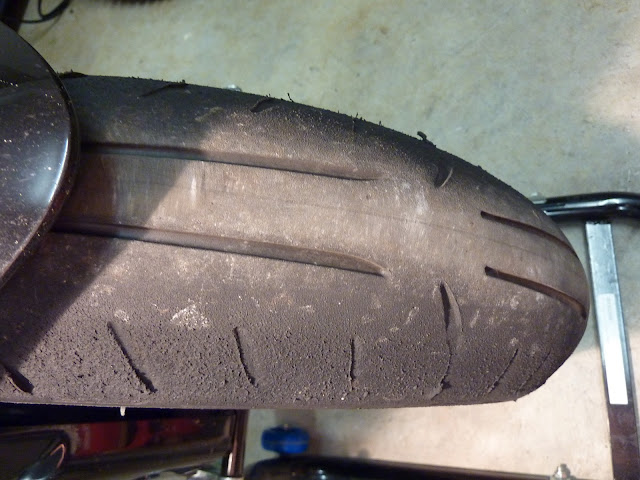Dunlop Arrowmax's - slipperier than an oil-soaked banana!
When I bought the DRZ it came fitted with brand new Arrowmax's, so I never really knew any different. It was always really twitchy - enough to put people off riding it in fact, but the lack of grip was becoming a real concern. Mates were riding WR450's and 450 EXC's, with decent rubber underneath, and to stay in front with a lack of power and poor grip was pretty difficult to say the least.
Cornering hard always made the little 400 step out at the rear (this could be quite amusing unless trying to make progress), and the front would protest at the slightest hint of a stoppie but, being tight, I battled on until they were worn out. I must just add that although the grip was extremely poor in the dry, in the wet it was horrendous! Has anybody actually bought these out of choice?
Sizes fitted at this point were a 140/70-17 on the back, and a 120/70-17 on the front. So what next?
Well a search on eBay came up with a place in Australia selling a pair of Pilot Powers for $302 delivered - bargain! It was time to take the rear up to a 150/60-17, and retain the 120/70-17 on the front because I didn't want it to be any more twitchy that it already was.
Michelin Pilot Powers - grip[pier] than a glue-soaked grippy thing!
The service from Kelly's Rubber was exceptional and the tyres turned up in less than a week. So a couple of hours later and they were fitted. Time to ride and try them out.
WOW!
I've never felt such a difference from just fitting a couple of tyres. It's transformed the whole bike!
It feels much more mellow, nowhere near as twitchy and just grips and grips! I tried everything on a few local hairpins to make it step out, and only once did it bite me in the ass because i was leant over too far! Awesome doesn't describe how good this bike is right now!
Power can be applied really early in a corner and even Dave, who swears by his WR, actually likes to ride it now. In fact I'd say he's quicker on it than the WR! So far I'm running at around 32psi and it feels great. I've heard a lot of supermoto riders use 29psi so I might have a play around with pressures - then again, if it ain't broke.
The best bit? Rolling stoppies are now easy enough because it actually grips! Should've bought them years ago.





























